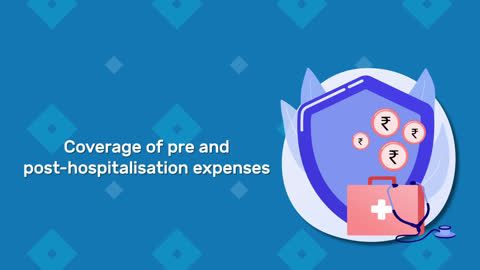3 mins read
06-March-2025
When companies offer stock-based benefits to employees, two common plans available are the Employee Stock Purchase Plan (ESPP) and the Employee Stock Ownership Plan (ESOP). Both plans provide employees with an opportunity to own shares in the company, but they serve different purposes and operate under different structures. While ESPPs allow employees to purchase stock at a discount using payroll deductions, ESOPs grant shares to employees as part of a compensation or retirement benefit package.
Understanding the difference between ESPP and ESOP is essential for employees to make informed financial decisions. ESPPs are more common in publicly traded companies and involve employees making voluntary investments, whereas ESOPs are typically employer-sponsored and designed as a long-term incentive. The suitability of each plan depends on an employee’s financial goals, risk tolerance, and investment preferences.
An ESOP, on the other hand, is an employer-sponsored program where the company allocates shares to employees at no direct cost. The shares are held in a trust and gradually transferred to employees based on a vesting schedule. Unlike ESPPs, ESOPs do not require employees to make monetary contributions, making them a more passive form of stock-based compensation.
ESPPs are commonly used by publicly traded companies to encourage employees to invest in the business while benefiting from potential stock price appreciation. Depending on the structure, ESPPs may include a lookback feature, allowing employees to purchase shares at the lower price between the beginning and end of the offering period.
Unlike ESPPs, ESOPs do not require employees to purchase shares. Instead, shares are allocated by the company, and employees gradually earn ownership through a vesting schedule. Upon leaving the company or retiring, employees can sell their vested shares back to the company or in the open market, depending on the plan's structure.
An ESPP is a voluntary program where employees actively invest a portion of their salary to buy shares at a discount. Since employees make monetary contributions, they bear the financial risk and can decide how long to hold or sell their shares. This flexibility allows employees to take advantage of stock market fluctuations and maximise their returns.
An ESOP, in contrast, is an employer-funded plan where employees receive shares without investing their own money. These shares are usually held in a trust and distributed over time, often as part of a retirement plan. Since ESOPs are structured as a long-term incentive, employees must stay with the company for a certain period to gain full ownership. Unlike ESPPs, ESOPs provide employees with a passive benefit without requiring any financial commitment.
Another key difference lies in liquidity. ESPP shares are typically available for sale immediately after purchase or after a short holding period, allowing employees to convert them into cash relatively quickly. ESOP shares, however, are tied to an employee’s tenure and can only be accessed upon retirement or departure from the company.
ESPPs offer financial flexibility, as employees can choose their contribution levels and sell shares after the holding period to generate profits. Additionally, ESPPs can provide favourable tax treatment if shares are held for the required duration, making them an attractive long-term investment option.
For companies, ESOPs enhance employee engagement and retention, as employees develop a sense of ownership in the company’s success. The plan also offers tax benefits to both employers and employees, making it a financially efficient way to distribute company ownership.
On the other hand, employees looking for a long-term financial benefit without making direct investments may find ESOPs more appealing. Since ESOPs provide stock ownership without financial risk, they serve as a passive way to build wealth over time. However, employees must consider the vesting period and restrictions on selling shares, as ESOPs are typically designed for retirement purposes.
The difference between ESPP and ESOP lies in how shares are acquired, their purpose, and their financial benefits. Employees should carefully evaluate their company’s stock plan, investment goals, and risk tolerance before deciding which plan aligns best with their financial future.
Top of Form
Bottom of Form
Understanding the difference between ESPP and ESOP is essential for employees to make informed financial decisions. ESPPs are more common in publicly traded companies and involve employees making voluntary investments, whereas ESOPs are typically employer-sponsored and designed as a long-term incentive. The suitability of each plan depends on an employee’s financial goals, risk tolerance, and investment preferences.
ESPP (Employee Stock Purchase Plan) and ESOP (Employee Stock Ownership Plan)
Both ESPP and ESOP enable employees to gain company ownership, but they differ in structure and objectives. An ESPP is a voluntary program where employees contribute a portion of their salary to purchase shares at a discount, often between 5% and 15%. Employees can choose whether to participate and how much to contribute.An ESOP, on the other hand, is an employer-sponsored program where the company allocates shares to employees at no direct cost. The shares are held in a trust and gradually transferred to employees based on a vesting schedule. Unlike ESPPs, ESOPs do not require employees to make monetary contributions, making them a more passive form of stock-based compensation.
What is an ESPP?
An Employee Stock Purchase Plan (ESPP) is a stock benefit program that allows employees to buy company shares at a reduced price. Employees contribute to the plan through payroll deductions, and at the end of an offering period, the accumulated funds are used to purchase shares.ESPPs are commonly used by publicly traded companies to encourage employees to invest in the business while benefiting from potential stock price appreciation. Depending on the structure, ESPPs may include a lookback feature, allowing employees to purchase shares at the lower price between the beginning and end of the offering period.
How ESPPs work
Payroll deductions – Employees contribute a percentage of their salary towards stock purchases.
Offering period – The plan operates in cycles where shares are purchased at the end of a defined period.
Discounted purchase – Employees buy shares at a discount, typically ranging from 5% to 15% of the market price.
Lookback feature – Some ESPPs offer a lookback provision, allowing shares to be purchased at the lowest price recorded during the offering period.
Holding period requirements – Employees may need to hold the shares for a specific period to receive tax advantages.
What is an ESOP?
An Employee Stock Ownership Plan (ESOP) is a company-sponsored program that grants shares to employees over time. These shares are held in a trust and distributed to employees as part of their compensation package. ESOPs are often used as a retirement benefit, where employees receive stock based on their tenure and contributions to the company.Unlike ESPPs, ESOPs do not require employees to purchase shares. Instead, shares are allocated by the company, and employees gradually earn ownership through a vesting schedule. Upon leaving the company or retiring, employees can sell their vested shares back to the company or in the open market, depending on the plan's structure.
How ESOPs work
Employer-funded contributions – The company allocates shares to employees at no direct cost to them.
Vesting period – Employees must stay with the company for a set period before gaining full ownership of their allocated shares.
Retirement benefit – Shares accumulate over time and serve as a long-term financial asset for employees.
Payout upon exit – Employees can sell their shares back to the company or in the open market when they retire or leave the organisation.
Key differences between ESPP and ESOP
While ESPP and ESOP both offer employees a way to acquire company stock, they have fundamental differences in terms of ownership, financial contribution, and payout structures.An ESPP is a voluntary program where employees actively invest a portion of their salary to buy shares at a discount. Since employees make monetary contributions, they bear the financial risk and can decide how long to hold or sell their shares. This flexibility allows employees to take advantage of stock market fluctuations and maximise their returns.
An ESOP, in contrast, is an employer-funded plan where employees receive shares without investing their own money. These shares are usually held in a trust and distributed over time, often as part of a retirement plan. Since ESOPs are structured as a long-term incentive, employees must stay with the company for a certain period to gain full ownership. Unlike ESPPs, ESOPs provide employees with a passive benefit without requiring any financial commitment.
Another key difference lies in liquidity. ESPP shares are typically available for sale immediately after purchase or after a short holding period, allowing employees to convert them into cash relatively quickly. ESOP shares, however, are tied to an employee’s tenure and can only be accessed upon retirement or departure from the company.
Benefits of ESPP
An ESPP provides employees with a structured and cost-effective way to invest in their company’s stock. Since shares are purchased at a discount, employees can build wealth over time while benefiting from stock appreciation.ESPPs offer financial flexibility, as employees can choose their contribution levels and sell shares after the holding period to generate profits. Additionally, ESPPs can provide favourable tax treatment if shares are held for the required duration, making them an attractive long-term investment option.
Benefits of ESOP
ESOPs provide long-term financial security to employees by granting company stock as part of their compensation. Since ESOPs do not require employees to purchase shares, they benefit without any upfront financial commitment. These plans serve as a retirement benefit, allowing employees to accumulate shares over time and sell them upon retirement or departure.For companies, ESOPs enhance employee engagement and retention, as employees develop a sense of ownership in the company’s success. The plan also offers tax benefits to both employers and employees, making it a financially efficient way to distribute company ownership.
Considerations when choosing between ESPP and ESOP
Deciding between an ESPP and an ESOP depends on an employee’s financial goals, investment strategy, and risk tolerance. Employees who prefer more control over their stock investments and want the flexibility to buy and sell shares may find ESPPs more suitable. These plans allow employees to take advantage of discounted prices and participate in the stock market while maintaining liquidity.On the other hand, employees looking for a long-term financial benefit without making direct investments may find ESOPs more appealing. Since ESOPs provide stock ownership without financial risk, they serve as a passive way to build wealth over time. However, employees must consider the vesting period and restrictions on selling shares, as ESOPs are typically designed for retirement purposes.
Conclusion
Both ESPPs and ESOPs are valuable employee stock benefit programs, but they cater to different financial needs. ESPPs allow employees to actively invest in company stock at a discount, giving them the ability to manage their investments and liquidity. ESOPs, in contrast, provide long-term ownership as part of a retirement benefit, offering financial security without requiring employees to make personal investments.The difference between ESPP and ESOP lies in how shares are acquired, their purpose, and their financial benefits. Employees should carefully evaluate their company’s stock plan, investment goals, and risk tolerance before deciding which plan aligns best with their financial future.
Top of Form
Bottom of Form




